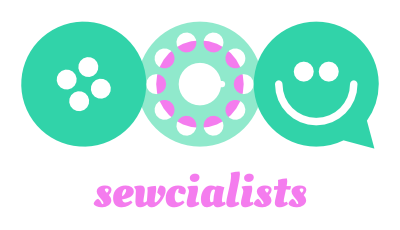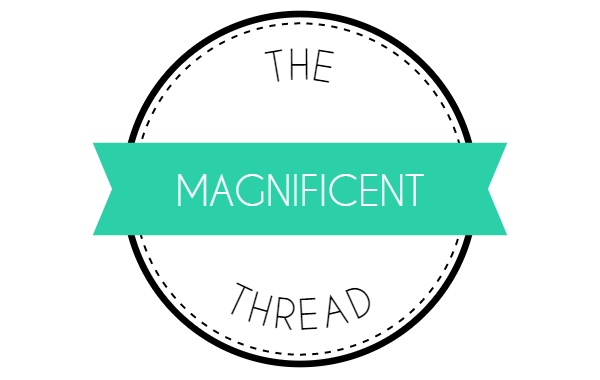 |
I had an idea of how I wanted my overalls to look, but here are some of my favourites from an inspiration hunt on Pinterest:
 |
You will need:
- A pair of trousers or a skirt
- Leftover fabric (it doesn't have to match!)
- Medium weight interfacing
- 5 buttons
- Matching thread
1. Take measurements
 |
Try on the trousers (or skirt) that you're making the bib for, so you can see exactly where they sit on your waist. Take a measurement along the front of your waist for the width of your bib, and then take a measurement for the length of the bib - it should sit just above your bust.
2. Do some working out and cut your fabric
 |
If you're brave, you can get straight to cutting your fabric, but I drew out this plan of my measurements, adding seam allowances on each side and an extra 3.5" on the bottom. The extra 3.5" gets folded and sits underneath the waistband of the trousers, so you may want to adjust this measurement depending on the depth of your waistband.
Cut out your bib.
3. Apply interfacing
 |
Apply a strip of interfacing to bottom 3.5" of your bib. This will provide stability when you sew in button holes later.
4. Finish the edges
 |
Turn the sides of your bib in by about 0.7cm and press. Turn them in on themselves again, pin and stitch. Do the same with the top edge of your bib.
5. Finish the bottom of your bib
 |
Press the bottom seam allowance to the wrong side of the bib.
Fold along the fold line - wrong sides together - and pin in place and stitch. The bottom of your bib should be quite sturdy, with your interfacing encased inside.
6. Make your braces
 |
Cut two long lengths of fabric, twice the width that you intend them to be, (remembering to add a seam allowance). I based mine on the laces from the Kielo Wrap Dress which are 3.25cm wide when finished. My finished braces are 66cm long, but I found it easier to cut them quite a bit longer so there's a bit of wiggle room for adjustments later.
Fold each lace, right sides facing, pin and stitch one end and side. Trim your seams, turn out and press.
Fold each lace, right sides facing, pin and stitch one end and side. Trim your seams, turn out and press.
7. Attach your braces to the bib
 |
Pin the finished ends of the braces - one at each corner of your bib - and machine stitch them in place.
8. Sew button holes on your bib
 |
Following your machine's instructions, sew button holes on the bottom interfaced panel of your bib. I chose to do 3, but you might want to do more depending on the width of the bib and the fabric you use - no matter how many you do, I'd recommend always having a button hole at the centre front.
9. Sew your buttons
 |
Sew buttons to the inside of your trouser waistband to correspond with the button holes on your bib. If your waistband is elasticated like mine, you'll need to try the trousers on to work out where your buttons should be positioned once the elastic is stretched during wear.
10. Finish your braces
 |
Cut them to length (plus a little bit extra for seam allowance) and sew a button hole close to the end of each one.
 |
11. Sew the buttons for your braces
 |
To attach your braces, sew 2 buttons to the inside of the waistband of your trousers. I measured mine so each sits 6cm from the centre back.
12. You have overalls!
 |
- Monday, August 31, 2015
- 0 Comments



































